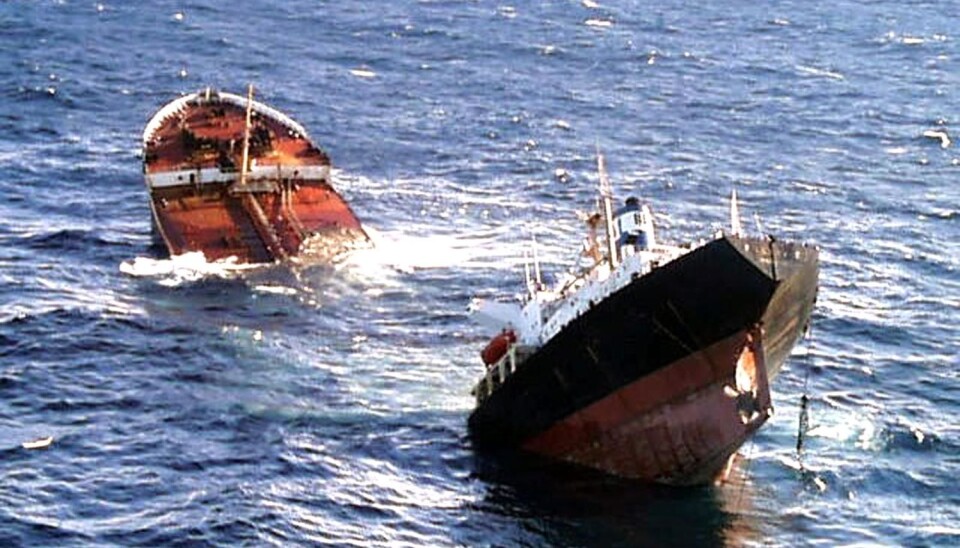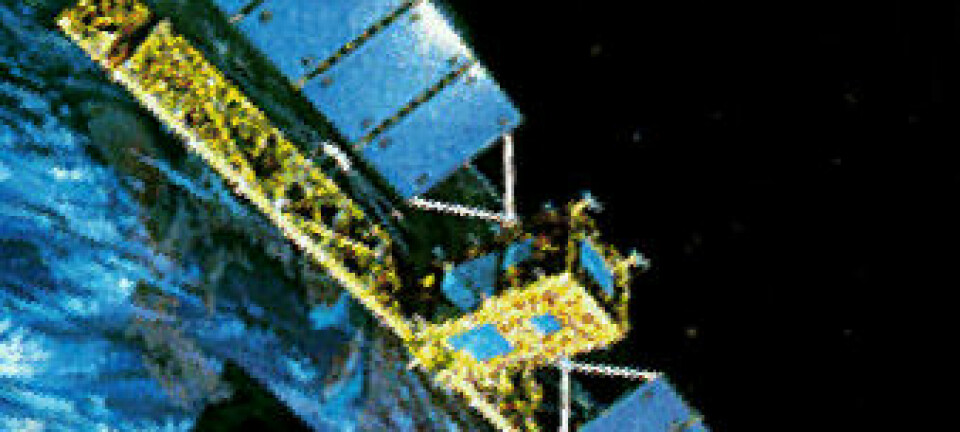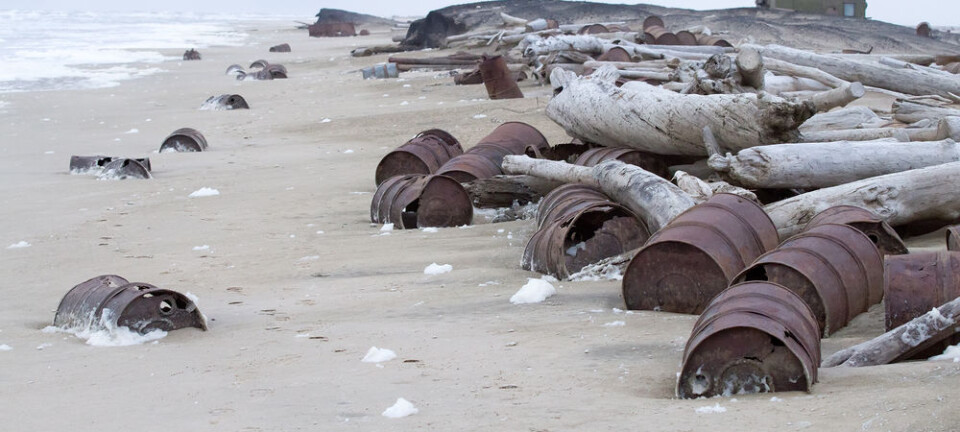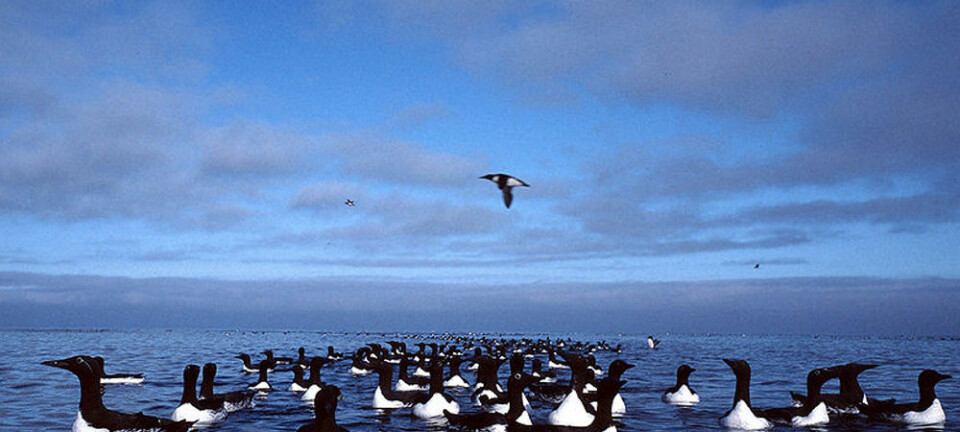An article from University of Tromsø – The Arctic University of Norway

Increased Russian tanker traffic raises oil spill risk
The risk of oil spills along the Norwegian coast may increase by as much as five times by 2025. This is because Russia plans to increase the export of crude oil through the Barents Sea to 100 million tonnes annually.
Denne artikkelen er over ti år gammel og kan inneholde utdatert informasjon.
As a result, as much as one-third of Russian crude oil will be transported along the Norwegian coast.
“Oil transport from northwest Russia accounts for the greatest increase in maritime traffic along the Norwegian coast,” says Elise Karlsen.
She recently defended her doctoral dissertation in law on the legal options that Norway has to try to prevent oil spills in the country’s waters.
A dramatic increase in Russia’s oil capacity
Statistics show that 15 million tonnes of oil were transported from Russia to Western markets via the Barents Sea in 2010. Over the next five to ten years, Russia plans to increase the capacity of its Arctic ports to 100 million tonnes of crude oil.
“Fortunately, the Norwegian authorities are aware of the potential problems this may pose. They’ve developed forecasts of future sea traffic and the associated risks. I’ve analysed the international regulations that set the legal framework for what Norway can do to protect its coasts from oil spills, and found that there’s a legal basis to do more than we are doing right now,” Karlsen says.
Today, Norway can restrict traffic in its territorial waters, within 12 nautical miles of a baseline on the coast. Norway can also ask ships to follow established shipping routes in the country’s exclusive economic zone, which extends to 200 nautical miles (370 kilometres) from the coast.
However, this request cannot be enforced.
“Most ships follow these requests, but it’s often much shorter to travel closer to the coastline. If a ship ignores a request to remain in the shipping lanes, which are a safe distance from the coast, there isn’t much we can do about it,” she says.
Environment over business interests
Much of Russia’s oil will be transported in supertankers along the Norwegian coast. A supertanker can carry as much as 400 000 tonnes of oil.
Projections provided at the request of the Norwegian government suggest that as many as six 300 000 tonne tankers could travel from northern Russia to the United States each week by 2015. It’s not hard to imagine what kind of natural disaster would occur if one of these ships were to have an oil spill.
“These supertankers sail along the entire coast of Northern Norway coast, then head west at Røst,” says Karlsen.
Other types of cargo ships also carry large amounts of oil as fuel reserves. As much as 80 percent of all oil spills are a result of operational releases from cargo ships, rather than large spills from oil tankers.
“Ships that sail in our territorial waters are subject to what is called ‘innocent passage’, which means we are legally obliged not to impede their travel. However, I believe that in high-traffic areas, international conventions allow for greater restrictions than Norway currently has in place. We could introduce more passage restrictions in Lofoten, Vesterålen and Senja, where cargo ships would have to sail around smaller fishing boats, for example.” she says.
“Regulations also allow for a compulsory piloting service in vulnerable areas,” says Karlsen, “but this is currently only in place for Norwegian fjords, not for ships in transit.”
“The political challenge here is that we as a seafaring nation can’t impose too many restrictions. But as a coastal nation, we have to consider environmental concerns over commercial interests. We have to dare to push the boundaries at international forums where we already are strongly represented,” she says.
“Norway has a long, beautiful, vital coastal zone. The sea is an important part of the country’s food supply today, as well as containing important resources for the future. In addition, the coastal environment has an intrinsic value,” Karlsen says.
“To live in a clean environment where the shores are not spoiled by oil spills, and where seabirds are able to live and breed in their natural environment, has a value beyond what can be measured with money,” she wrote in her dissertation.
No need to panic
Karlsen adds, however, that there’s no need to panic, and that Norway in general has done a good job in protecting its shores. The preventative regulations work, and figures from recent years show that accident statistics for ship traffic have dropped. Of course, it is in both the coastal state and shipping industry’s interests to have as few accidents as possible.
The actual amount of operational releases along the Norwegian coast is unknown. It’s hard to estimate because normal ship releases aren’t monitored, which makes it difficult to calculate illegal discharges. This means that increasing surveillance along the coast could prevent disasters before they happen.
“It is legal to monitor shipping in the Norwegian economic zone, but not to intervene. However, if we see a spill happen, different regulations come into play and Norway can intervene in a more comprehensive way. We need to be proactive – the more security measures we have in place, the less the risk of spills in our waters,” she says.


































